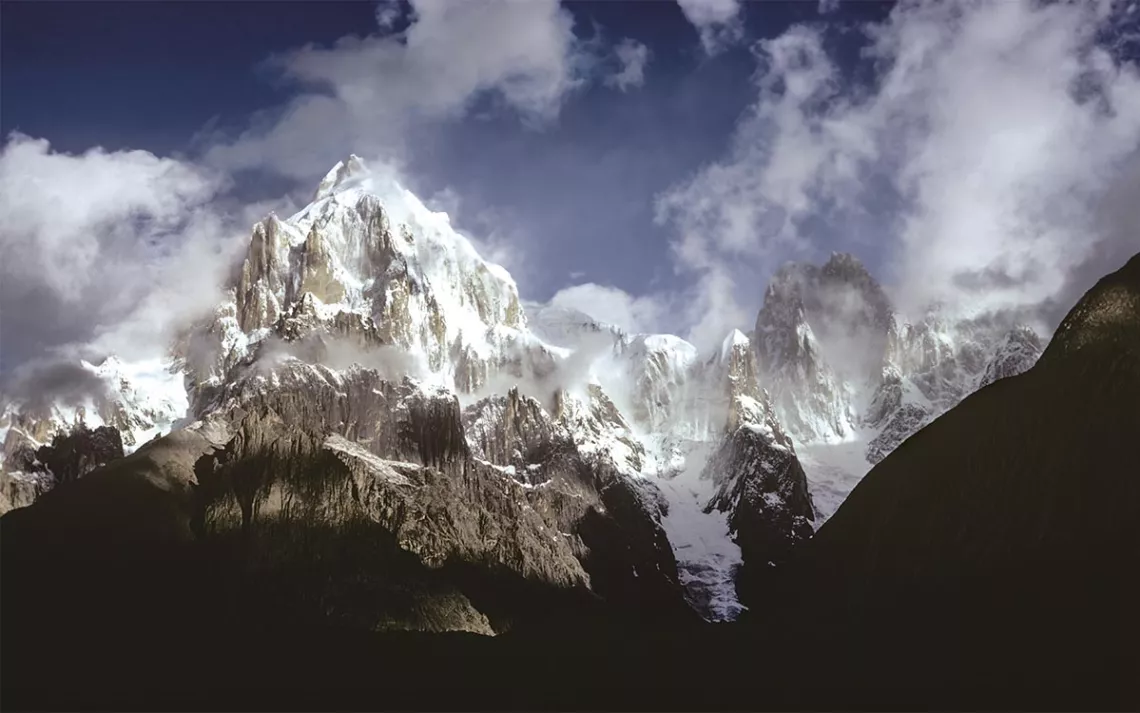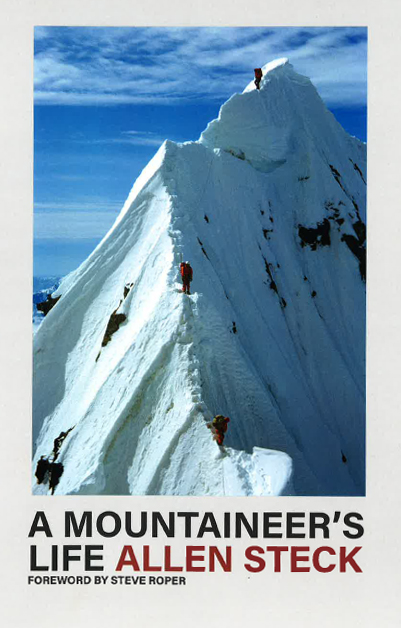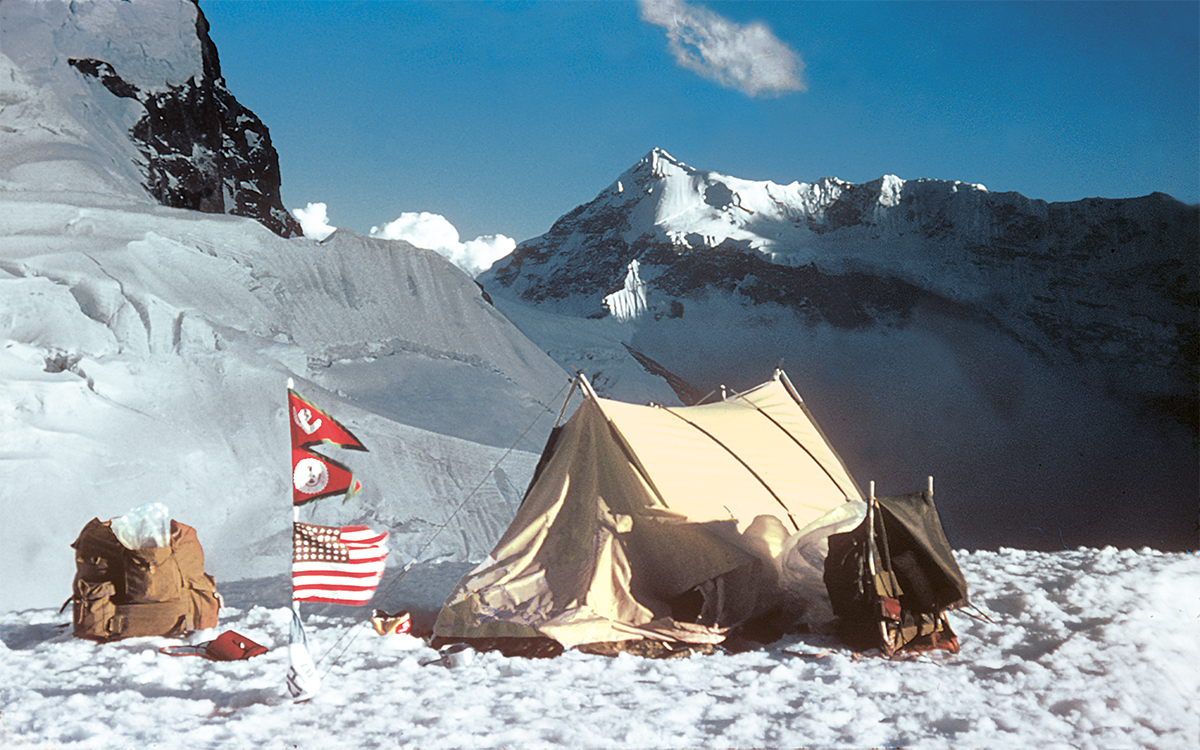A Mountaineer’s Life Is More Than That of a Mere Peak Bagger
Allen Steck surveys a life well lived, and mountains well climbed

The cathedral-like Payu Peak from Urdukas camp above the Baltoro Glacier. | Photos by Allen Steck, courtesy of Patagonia, from A Mountaineer's Life
 At 91 years of age, Allen Steck has gifted us with his memoir, A Mountaineer’s Life (Patagonia Books, 2017). For those wondering if this book would ever materialize, our wait has been beautifully rewarded. As long-time friend, climbing partner, and collaborator Steve Roper notes in his foreword, Steck has not followed a strict timeline here, but concentrated instead on “telling his story, when the mood struck, about disparate episodes of his marvelously varied life.”
At 91 years of age, Allen Steck has gifted us with his memoir, A Mountaineer’s Life (Patagonia Books, 2017). For those wondering if this book would ever materialize, our wait has been beautifully rewarded. As long-time friend, climbing partner, and collaborator Steve Roper notes in his foreword, Steck has not followed a strict timeline here, but concentrated instead on “telling his story, when the mood struck, about disparate episodes of his marvelously varied life.”
These disparate episodes cover events for which Steck is well known: the first ascent with John Salathé of the Steck-Salathé Route on Sentinel Rock in 1950, the first ascent of the unrepeated Hummingbird Ridge on Mt. Logan in the Saint Elias Range in 1965, the founding and editing over 33 years with Steve Roper of Ascent, the Sierra Club Journal of Mountaineering. He briefly mentions coauthoring with Roper the highly influential (for better or worse, Steck admits) well-thumbed book of dreams, Fifty Classic Climbs of North America. However, these episodes take up only three of the 23 chapters. While climbing is center stage for much of the book, Steck deftly surveys a life that is much larger than climbing alone—family, travel, and work are all accounted for here.
Today, the term “mountaineers” sometimes refers to mere peak baggers. Steck was a mountaineer in the very best sense of the word, equally at home as a pioneer rock climber, alpinist, and big expedition member to the world’s highest mountains. Again, as Roper notes, in 1950 he climbed a new route on Mt. Waddington in British Columbia just weeks after his and Salathé’s groundbreaking ascent on Sentinel Rock. Likewise he followed his epic climb of the Hummingbird Ridge within the year by an early ascent of El Capitan’s Salathé Wall. Climbs on Makalu, in the Cordillera Blanca, the Pamirs (Russia), and the first ascent of Payu Peak in Pakistan round out his climbing career. Steck has a matter-of-fact narrative style throughout these tales that reads as almost self-effacing, as if anyone might have accomplished as much. Not likely: His has been an exceptional life.
One of the most charming chapters of the book barely concerns Steck at all: "Who Was John Salathé?" As Steck further asks, “Who would have imagined that this stocky, barrel-chested blacksmith, who spoke with a heavy Swiss accent, would soon become involved in some of the boldest and greatest aid climbing in Yosemite’s Golden Age.” Salathé, born in 1899, began his climbing career after his discovery of the Sierra Club at Parson’s Lodge in Tuolumne Meadows and ended after his and Steck’s climb of Sentinel Rock in 1950. Credited with inventing hard steel pitons, Salathé was about as enigmatic a character the climbing world has seen: A strict vegetarian who spoke with angels, he ended his days living out of a VW van in the American West, where Steck visited him as late as 1991, a year before his death. Without Steck’s chapter here, a crucial character would be mostly lost to climbing history.

Camp III on Makalu, at about 22,000 feet. Note the special tents supplied to the trip
The book’s first chapter, “Climbing in the Alps With Karl Lugmayer, 1949,” beautifully recalls Steck's deepest, most profound memories: “One is very often unaware of the significance of events as they unfold. Such was the case when I stepped off the Arlberg Express in Vienna and met Karl Lugmayer.” It’s as if we are entering an enchanted world of mythical rarely climbed alpine peaks, witness to a rare partnership that would develop into a lifelong friendship.
No one who has investigated the Hummingbird Ridge is surprised that Steck and company’s 1965 ascent has gone unrepeated. For anyone thinking about trying it, study Steck’s two photographs of Camp II, carved out of cornice on the ridge. A robust sneeze might have brought the whole thing crashing down. An oft-quoted line from Steck’s account: “We did not deceive ourselves that we were engaged in an activity that was anything but debilitating, dangerous, euphoric, kinesthetic, expensive, frivolously essential, economically useless, and totally without redeeming social significance. One should not probe for deeper meanings.” This little manifesto, with all its seeming contradictions, seems as true today as when Steck first penned those words half a century ago. As for the “deeper meanings”—at some point the deeds speak for themselves.
Steck waited for a publisher that would buy into his vision for the book as a work of art. In Patagonia, he found that publisher: The book is elegantly designed (endsheets by Samivel!) and the photographs, of which there are many, are historic and beautifully reproduced. His opening dedication to his family, particularly his grandson, includes these words: “And make sure your personal and climbing lives are adequately meshed.” Allen Steck’s surely have been.
 The Magazine of The Sierra Club
The Magazine of The Sierra Club



